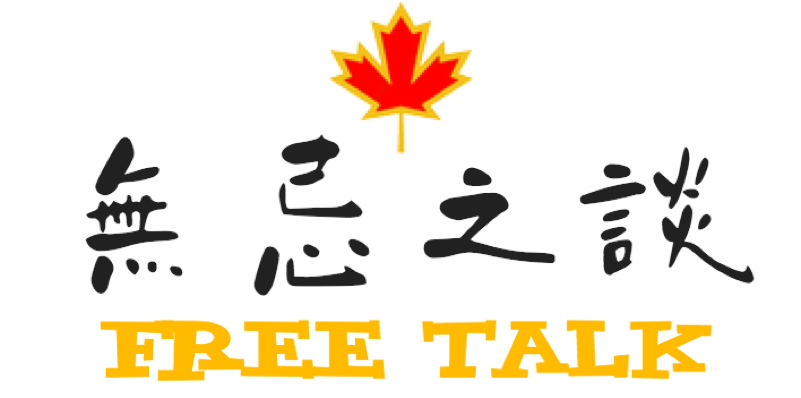China is a major producing area for teas in the world. It has many types and varieties of teas, with a long-lasting tea culture. Among the abundant teas, what makes a tea famous lies in the unique style, color, aroma, taste and shape. What are the top ten famous teas in China?
Top 1: Xihu Longjing (西湖龙井)
Type: green tea
Planting region: Longjing Village, Hangzhou City, Zhejiang Province, east China
The super Xihu Longjing (or West Lake Dragon Well) tea is flat, smooth and straight. The color is green and lustrous, the aroma is fresh and intense, the taste is fresh and sweet, and the leaf bottom is tender and flowery. It is known as “the queen of green tea”. Xihu Longjing has a long picking period and can be picked about 30 batches throughout the year, and the processing technique is also very special.
There are more than 30 brands of Xihu Longjing Tea, of which the more famous are Big Buddha Longjing(大佛龙井), Shifeng Longjing (狮峰龙井) and Meiwu Longjing (梅坞龙井).
Xihu Longjing is divided into grades 1 to 8 according to the shape and inner quality, and the best Xihu Longjing is the tea leaves produced by the eighteen tea trees in front of the Hugong Temple at the foot of Shifeng Mountain. The emperor Qianlong in Qing dynasty named the eighteen tea trees as “royal tea”.
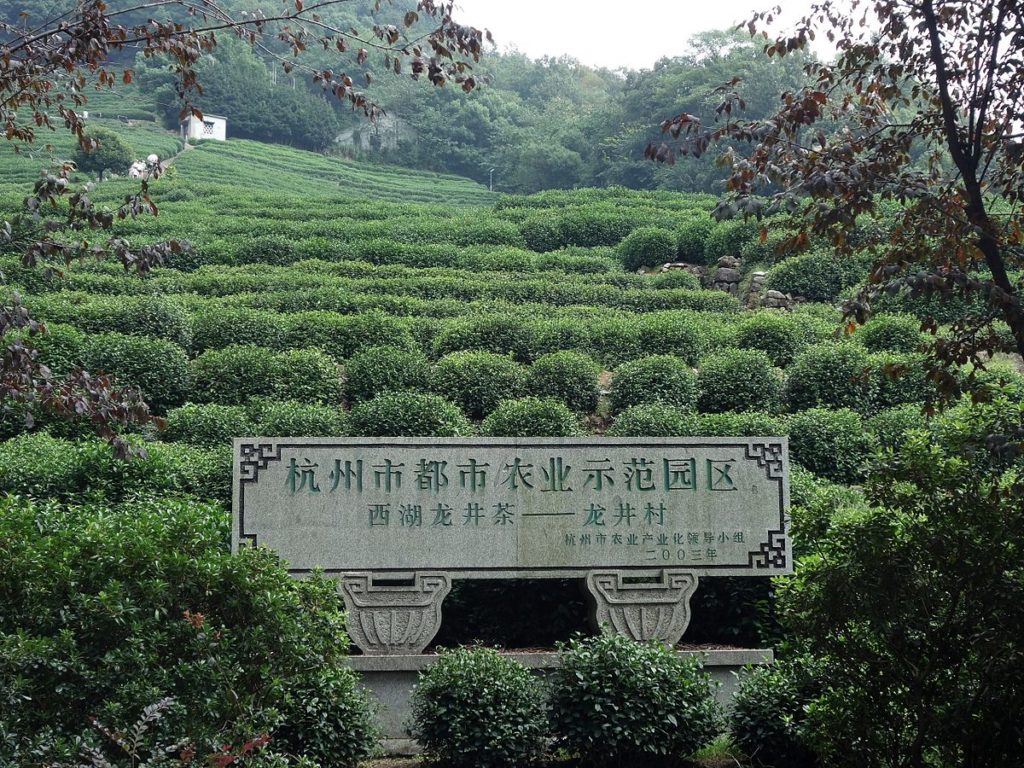
Top 2: Biluochun (碧螺春)
Type: green tea
Planting region: Dong Ting Mountain, Suzhou City, Jiangsu Province, southeast China
Biluochun is a traditional Chinese tea over one thousand years, listed as a tribute in the Tang Dynasty. 60,000 to 70,000 fresh tea buds are needed to make just 500g of high-grade Biluochun dry tea. Therefore, superior Biluochun appears to be green and covered by a layer of white hair. The shape is slender or curled like a snail. After brewing, the tea water is green and clear, emitting a strong pleasant fragrance; the fresh and thick flavor can last for a long time. This famous Chinese tea contains a lot of healthy compounds such as catechin, vitamin C and A, caffeine, flavanols, tea polyphenols, etc.
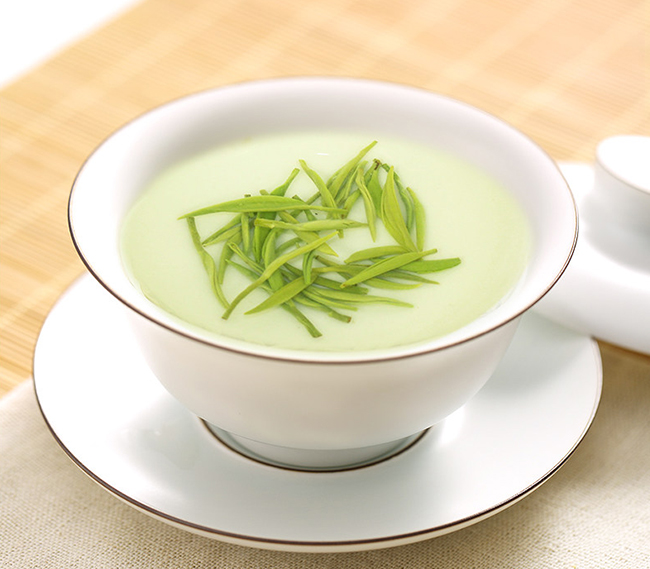
Top 3: Xinyang Maojian (信阳毛尖)
Type: green tea
Planting regions: Xinyang City, Henan Province, central China
Xinyang Maojian is featured with “thin, round, light, straight, plenty of white microvilli, high fragrance, strong flavor, green soup color”. It is welcomed by its unique features: slender shape; round edge; quite smooth surface; much more fine hairs; strong taste; and clear and green soup. The fragrance spreads far away. It is known as “the king of green tea”.
Xinyang Maojian has a variety of nutritional values such as relieving thirst, clearing eyes and clearing eyes, refreshing, removing greasy and eliminating food. It has the effects of strengthening the body and promoting the conversion and absorption of lipid substances.

Top 4: Huangshan Maofeng (黄山毛峰)
Type: green tea
Planting regions: Huangshan Mountain, Anhui Province, east China
Maofeng, literally means the leaves with white fluff and a sharp edge. Huangshan Maofeng is slightly curly in shape, resembling a tongue, yellowish in green, revealing white fluff, and with golden yellow fish leaves. After pouring into the cup, the top of the mist is brewed, the soup color is clear and yellowish, the bottom of the leaf is green, the taste is mellow, the aroma is like blue, and the flavor is deep. The manufacturing of Huangshan Maofeng is divided into four processes: picking, deactivating of enzymes, twisting, drying and baking.
Huangshan Maofeng has several benefits to the body: it can excite the central nervous system so that to enhance your working and learning efficiency, make the heart stronger, inhibit arteriosclerosis, resist bacteria, lose weight, anti-aging and more.
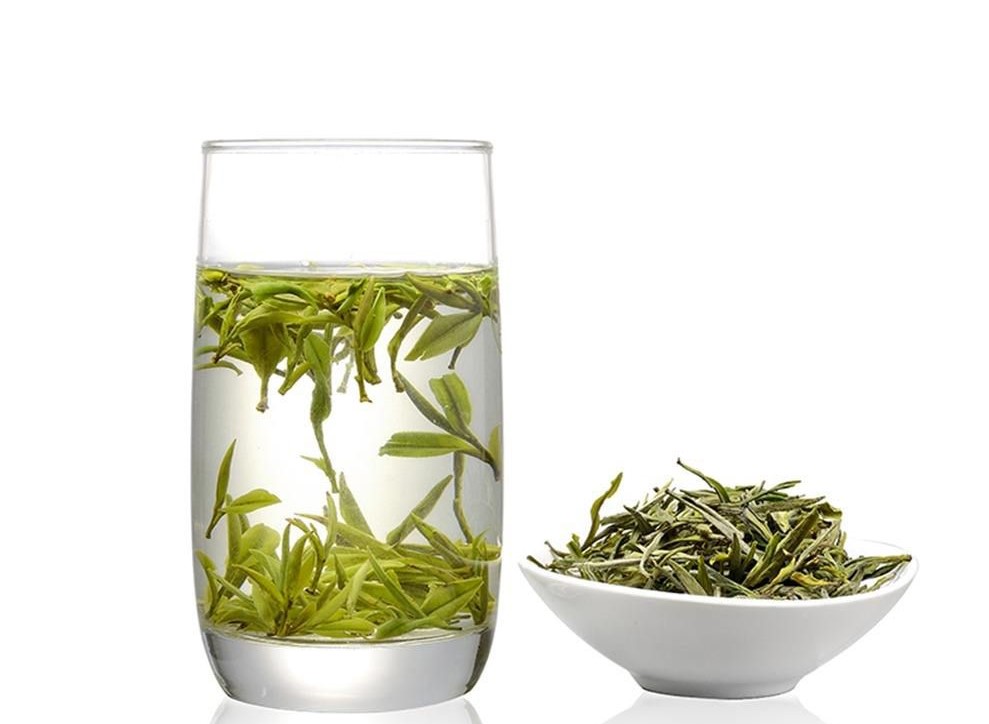
Top 5: Pu’er Tea (普洱茶)
Type: post-fermented tea
Planting regions: multiple places in Yunnan Province, southwest China
Pu’er tea is mainly produced in Xishuangbanna, Lincang, Pu’er and other regions in Yunnan Province. Pu’er tea pays special attention to brewing skills and tasting art, with rich drinking methods. Pu’er tea soup is orange-yellow or red-brown, with a sharp and long-lasting aroma, a strong mellow taste. It is very durable for brewing.
Pu’er tea is made from Yunnan big green tea leaves after sunning. It grows from a well-protected area, made with specific processing techniques, thus has unique quality. According to its processing techniques, Pu’er tea is divided into raw tea (sheng cha) and ripe tea (shou cha).
Pu’er tea contains lipase, which is useful in the decomposition of fat. The tea can help in digesting, cleaning the body and removing toxic substances. Moreover, Pu’er tea can also nourish the face and protect the stomach.

Top 6: Wuyi Yancha (武夷岩茶)
Type: oolong tea
Planting region: Wuyi Mountain, Fujian Province, southeast China
Wuyi Yancha, literally meaning Wuyi Rock tea, is honored as the highest grade of oolong tea because it combines the faint scent of green tea and the sweet and mellow taste of black tea. The tea tree grows in the rock cracks. The shape of Wuyi Yancha’s leaf is twisted, resembling a dragonfly’s head, and its color is green with brown oil, and its inner quality is live, sweet, clear and fragrant.
Wuyi Yancha is the best in Chinese oolong tea. There are essential, water-soluble vitamins B1, B2, B3, B5, B6, H, C, P and inositol in it, which can be fully utilized when drinking. Wuyi Yancha has many varieties, such as Wuyi Narcissus (Shui Xian), Wuyi Unusual Species (Qi Zhong), Wuyi Cinnamon Scent (Rou Gui), Big Red Robe (Dahongpao). The most famous one is Dahongpao tea, known as the “king of tea”. Because of its special techniques, Wuyi Yancha has an incredible range of rich flavors.

Top 7: Qimen Hongcha (祁门红茶)
Type: black tea
Planting region: Qimen County, Huangshan City, Anhui Province, east China
Qimen Hongcha, also known as Keemun black tea, is praised as “the queen of black tea” and greatly favored by the Britain royal family. The black tea of tight, thin and straight shape and dark, bright color is considered as Kung Fu tea. This famous Chinese tea is a rich source of riboflavin, folic acid, carotene, tocopherol, and luteinone and is also an essential source of fluoride.
Qimen Hongcha is divided into ritual tea, special tea, special grade, first grade, second grade, third grade, fourth grade, fifth grade, sixth grade, and seventh grade according to its appearance and inner quality. This tea is rich in polyphenols, aldehydes, and amino acid, which will stimulate the gastrointestinal mucosa and may induce stomach diseases.
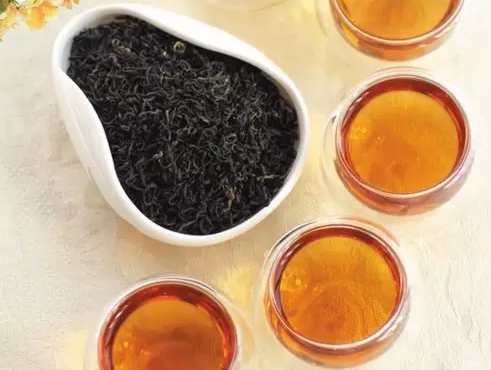
Top 8: Duyun Maojian (都匀毛尖)
Type: green tea
Planting region: Duyun City, Guizhou Province, southwest China
The shape of the tea is slender, tight and fine curly. The blade surface is jade-green and the dark side is even and bright. The fragrance is fresh, which can be smelt from far away. The taste is fresh and thick, and the flavor is refreshing, with a leaf bottom of green and bright. Duyun Maojian tea is picked in the early April (around Qingming), and the standard of picking is one bud and one leaf, the length is not more than 2 cm. It usually takes about 53,000 to 56,000 buds to make 500 grams of high-grade Maojian tea.
The tea tastes good, and also has a variety of functions and effects such as relieving thirst, clearing eyes, refreshing the mind, removing grease, inhibiting atherosclerosis, preventing cancer, and protecting against radioactive elements.

Top 9: Tieguanyin (铁观音)
Type: oolong tea
Planting region: Anxi County, Quanzhou City, Fujian Province, southeast China
Tieguanyin is native to Fujian Province, which belongs to a semi-fermented tea and the taste is in between of green tea and black tea. It has a unique elegant fragrance. After brewing, it has a natural orchid fragrance. The taste is pure, the fragrance is rich and lasting. The pure and thick flavor can last for a long time.
Tieguanyin contains higher amino acids, vitamins, minerals, tea polyphenols, and alkaloids, has a variety of nutritional and medicinal effects and has the functions of health care. Additionally, it also has the effects of anti-aging, anti-arteriosclerosis, sober you up, prevention and treatment of diabetes, weight loss and bodybuilding, prevention and treatment of dental caries.
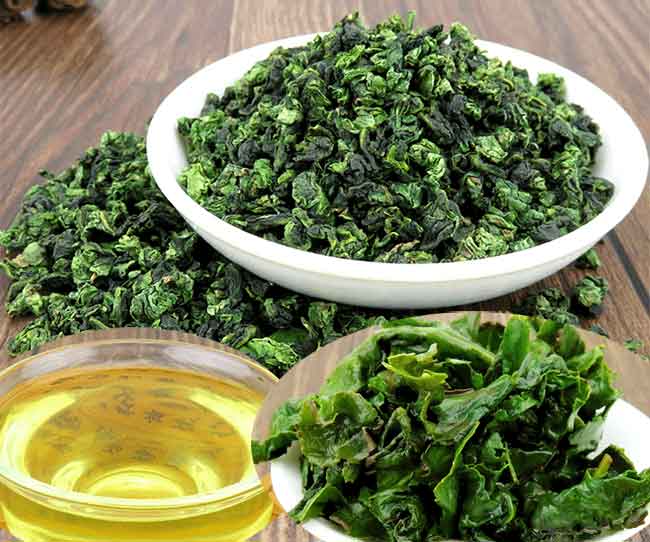
Top 10: Lu’an Melon Seed (六安瓜片)
Type: green tea
Planting region: Dabie Mountain, Lu’an City, Anhui Province, east China
Of all the tea leaves worldwide, Lu’an Melon Seed (or Liu’an Guapian) is the only one that has no buds or stems and made from single tea leaf. When removing the bud, the monolithic shape will be maintained. The stems have been lignified and removed during the production process, ensuring the tea is to be strong but not bitter, to be fragrant but not astringent. Lu’an Melon Seed is picked within 10 days near Gu Yu around mid-April.
Lu’an Melon Seed is not only used for relieving heat and thirst, but also can clear the mind and clear the eyes, refreshing, and can also be used for digestion, detoxification, and beauty. If you get fatigued, poisoned or heat stroke, this popular Chinese tea can help you relieve the pain.

